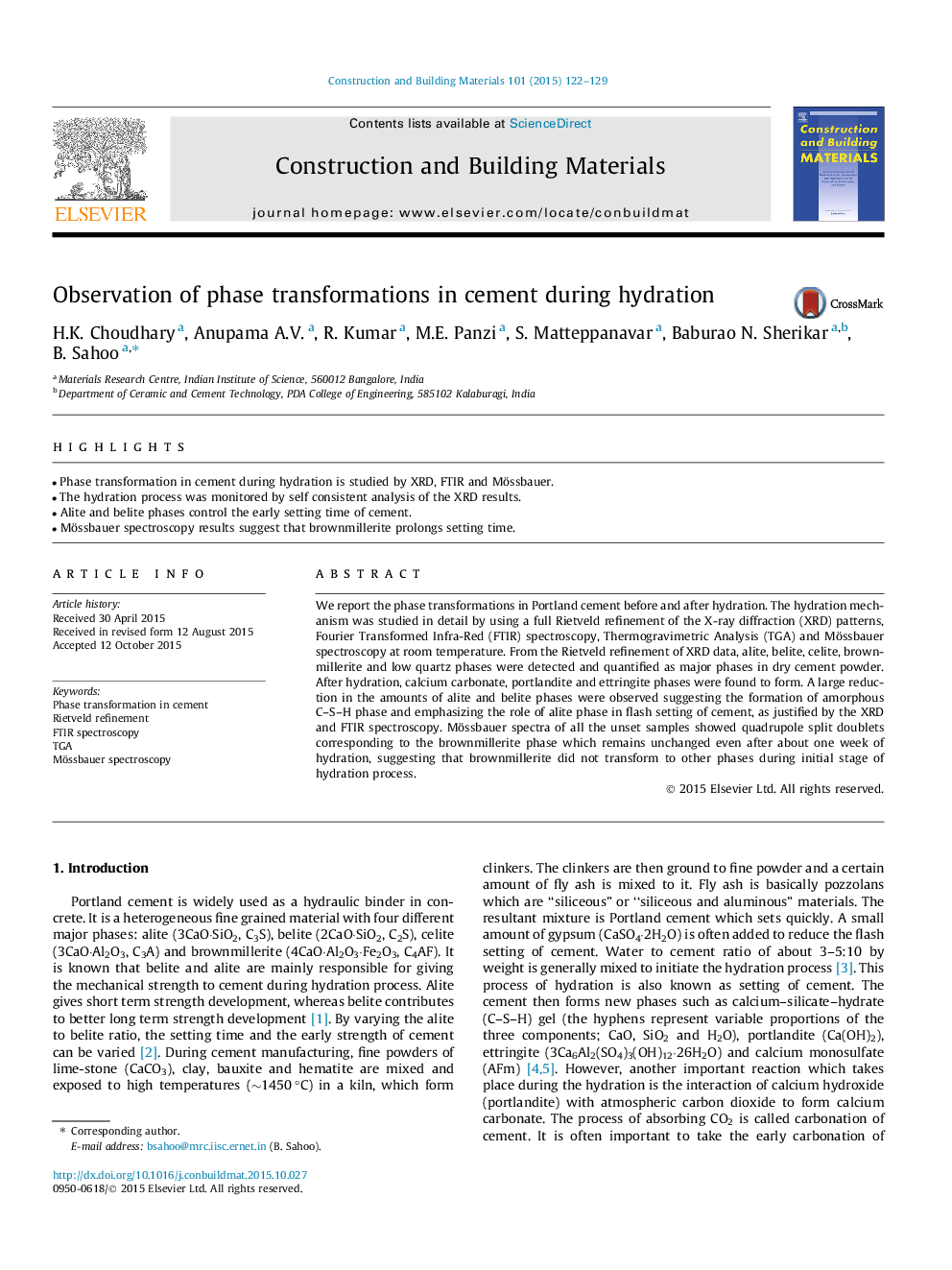| Article ID | Journal | Published Year | Pages | File Type |
|---|---|---|---|---|
| 256345 | Construction and Building Materials | 2015 | 8 Pages |
•Phase transformation in cement during hydration is studied by XRD, FTIR and Mössbauer.•The hydration process was monitored by self consistent analysis of the XRD results.•Alite and belite phases control the early setting time of cement.•Mössbauer spectroscopy results suggest that brownmillerite prolongs setting time.
We report the phase transformations in Portland cement before and after hydration. The hydration mechanism was studied in detail by using a full Rietveld refinement of the X-ray diffraction (XRD) patterns, Fourier Transformed Infra-Red (FTIR) spectroscopy, Thermogravimetric Analysis (TGA) and Mössbauer spectroscopy at room temperature. From the Rietveld refinement of XRD data, alite, belite, celite, brownmillerite and low quartz phases were detected and quantified as major phases in dry cement powder. After hydration, calcium carbonate, portlandite and ettringite phases were found to form. A large reduction in the amounts of alite and belite phases were observed suggesting the formation of amorphous C–S–H phase and emphasizing the role of alite phase in flash setting of cement, as justified by the XRD and FTIR spectroscopy. Mössbauer spectra of all the unset samples showed quadrupole split doublets corresponding to the brownmillerite phase which remains unchanged even after about one week of hydration, suggesting that brownmillerite did not transform to other phases during initial stage of hydration process.
